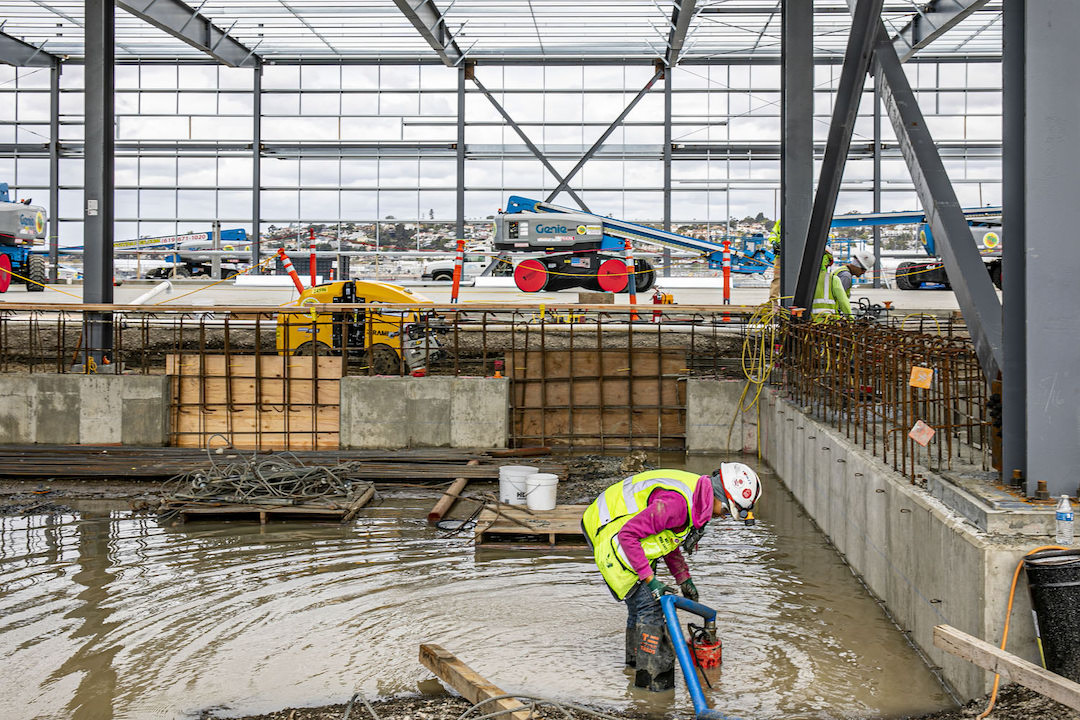Nearly two out of three U.S. metro areas added construction jobs between October 2020 and October 2021, according to an analysis by the Associated General Contractors of America of government employment data released today. Association officials noted that the job gains would likely have been larger and more widespread if firms weren’t dealing with the twin challenges of supply chain problems and labor shortages.
“While it is heartening that construction is recovering from the lows of 2020 in much of the country, the pandemic is still causing major supply-chain problems and is keeping some workers from seeking employment,” said Ken Simonson, the association’s chief economist. “Those impediments threaten to limit construction employment gains in many metros.”
Construction employment increased in 236 or 66% of 358 metro areas over the last 12 months. Sacramento--Roseville--Arden-
Construction employment declined from a year earlier in 72 metros and held steady in 50. Nassau County-Suffolk County, N.Y. lost the most jobs (-6,700 or -8%), followed by New York City (-5,500 jobs, -3%); Orange-Rockland-Westchester counties, N.Y. (-3,600 jobs, -8%); Dallas-Plano-Irving, Texas (-2,800 jobs, -2%) and Calvert-Charles-Prince George’s counties, Md. (-2,600 jobs, -8%). The largest percentage declines were in Evansville, Ind.-Ky. (-17%, -1,700 jobs); Altoona, Pa. (-13%, -400 jobs); Watertown-Fort Drum, N.Y. (-11%, -200 jobs); and Gary, Ind. (-10%, -1,700 jobs).
Association officials urged the Biden administration to continue working to reduce tariffs on key construction materials, and to take additional steps to ease supply chain problems at ports and other shipping facilities. They added that the association was working to recruit more people into the construction industry, and the recently enacted Bipartisan Infrastructure Bill should send a positive message to many workers about the expanding career opportunities in construction.
“Firms are struggling to source materials for projects, coping with rising prices for those materials, all while eagerly searching for workers to put those materials in place,” said Stephen E. Sandherr, the association’s chief executive officer. “We are eager to work with public officials to address supply chain challenges even as we work to recruit more people into high-paying construction careers.”
View the metro employment data, rankings, top 10, and new highs and lows.
Related Stories
Market Data | Jul 21, 2022
Architecture Billings Index continues to stabilize but remains healthy
Architecture firms reported increasing demand for design services in June, according to a new report today from The American Institute of Architects (AIA).
Market Data | Jul 21, 2022
Despite deteriorating economic conditions, nonresidential construction spending projected to increase through 2023
Construction spending on buildings is projected to increase just over nine percent this year and another six percent in 2023, according to a new report from the American Institute of Architects (AIA).
Building Team | Jul 18, 2022
Understanding the growing design-build market
FMI’s new analysis of the design-build market forecast for the next fives years shows that this delivery method will continue to grow, despite challenges from the COVID-19 pandemic.
Market Data | Jul 1, 2022
Nonresidential construction spending slightly dips in May, says ABC
National nonresidential construction spending was down by 0.6% in May, according to an Associated Builders and Contractors analysis of data published today by the U.S. Census Bureau.
Market Data | Jun 30, 2022
Yardi Matrix releases new national rent growth forecast
Rents in most American cities continue to rise slightly each month, but are not duplicating the rapid escalation rates exhibited in 2021.
Market Data | Jun 22, 2022
Architecture Billings Index slows but remains strong
Architecture firms reported increasing demand for design services in May, according to a new report today from The American Institute of Architects (AIA).
Building Team | Jun 17, 2022
Data analytics in design and construction: from confusion to clarity and the data-driven future
Data helps virtual design and construction (VDC) teams predict project risks and navigate change, which is especially vital in today’s fluctuating construction environment.
Market Data | Jun 15, 2022
ABC’s construction backlog rises in May; contractor confidence falters
Associated Builders and Contractors reports today that its Construction Backlog Indicator increased to nine months in May from 8.8 months in April, according to an ABC member survey conducted May 17 to June 3. The reading is up one month from May 2021.
Market Data | May 18, 2022
Architecture Billings Index moderates slightly, remains strong
For the fifteenth consecutive month architecture firms reported increasing demand for design services in April, according to a new report today from The American Institute of Architects (AIA).
Market Data | May 12, 2022
Monthly construction input prices increase in April
Construction input prices increased 0.8% in April compared to the previous month, according to an Associated Builders and Contractors analysis of U.S. Bureau of Labor Statistics’ Producer Price Index data released today.

















